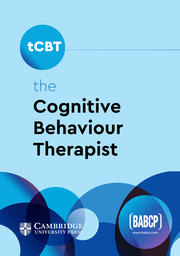No CrossRef data available.
Article contents
Supervisees’ evaluations of a structured video-supervision technique
Published online by Cambridge University Press: 14 May 2025
Abstract
Video-recordings are considered crucial for effective supervision, but empirical evidence is limited. We thus conducted a naturalistic study to assess supervisees’ evaluations of a structured video-supervision technique (‘Give Me 3’ [GM3]) compared with video-supervision as usual (VSAU) and supervision based on self-report (SAU). Twenty-four participants in postgraduate training in cognitive behavioural therapy conducted each supervision method and provided quantitative ratings of supervision satisfaction. A subsample of nine trainees participated in semi-structured qualitative interviews. Repeated-measure ANOVAs revealed no difference in post-session ratings of supervisees’ satisfaction with supervision. Retrospective comparisons of the three supervision methods resulted in significant differences in perceived effort and comfort but not in usefulness. The qualitative interviews suggested that the supervisees generally appreciated the benefits of video-supported supervision, while evaluations of GM3 and VSAU were mixed. VSAU and GM3 both appeared to have distinct advantages which might enrich supervision if aligned with the therapeutic context and supervisees’ goals.
(1) How does trainees’ supervision satisfaction differ between supervision with or without the review of video-recorded therapy sessions?
(2) Is structured video-supervision perceived by trainee supervisees as being more satisfactory than unstructured video-supervision?
(3) How do supervisees perceive the differences between structured versus unstructured (video)supervision? When is each method deemed most useful?
Information
- Type
- Original Research
- Information
- Copyright
- © The Author(s), 2025. Published by Cambridge University Press on behalf of British Association for Behavioural and Cognitive Psychotherapies


Comments
No Comments have been published for this article.